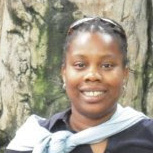 “What DO black people do for a living? You know to earn money.”
“What DO black people do for a living? You know to earn money.”
My heart sank as I listened to a vibrant, intelligent black young man recount this exchange with his college roommate. He looked sad and deeply perplexed. “I was like, really? C’mon. I was completely unprepared for that one,” he observed. That was in 2011, and, like many youth development professionals working in communities of color, I longed to see the manifestations of the purported post-racial era ushered in by the election of Barak Obama. Then came the murders of Trayvon Martin and Renisha McBride, each victims of fear instilled in our citizens about black people. This was followed by incidents of white students dressing as Martin for Halloween. Our country’s inability to speak about race and structural racism in a critical or literate manner robs our children of their humanity. As educators, it is imperative that we build the competency to engage in respectful and productive dialogue about race as a 21st century skill. Competently engaging the diversity of this nation is the next challenge for the youth of today.
Because we believe we are in a post-racial era we haven’t worked to learn how to talk about race. Our collective belief that social gains and the historic 2008 election set us on a corrective course was interrupted by the harsh reality of structural racism evidenced in the handling of the Martin and McBride murders.
As youth development professionals and educators we have a responsibility to engage all young people in critical conversations that challenge the dominant narrative of race in the United States. For many years I worked with a Harlem-based organization committed to engaging youth in such dialogues. Students explored their social identities such as race, class and gender. Students analyzed how they were socialized into their identities and how these informed their experiences in the world. This careful and developmentally appropriate exploration led them to have a deeper understanding of themselves and a greater openness to interact with others beyond the comfort of their communities. As a result many arrived on predominantly white college campuses better equipped to manage the micro-aggressions described in the opening paragraph and in a recent students of color project at Harvard. It would be heartening if white students were equally responsible for and provided with opportunities to unpack their own identities, power and privilege so that they better understood the damaging effects of structural racism for all people. So how do we engage in these conversations?
- Create a safe space for dialogue. This does not mean talking about race is going to be comfortable. It will not. However, to promote dialogue it’s important that participants feel heard and feelings are validated.
- Make it age appropriate. Introducing sensitive and complex topics needs to be explored at the developmental level of participants. Creating an activity can get the ball rolling, however good judgment must be exercised. I encountered a group seeking to teach about slavery by engaging youth as slaves in a game of hide-and-go-seek. White students mocked the experience because they did not get the point and black students were demoralized.
- Know your stuff. It’s imperative that you are well versed in the historical and social aspects and impacts of race and racism in the United States. Immersing yourself in dominant and contested narratives about race will enable you to more effectively unpack beliefs, attitudes and behaviors.
- Examine your bias. Having an awareness of our own biases gives us an opportunity to be in touch with our own feelings, perspectives and be more accountable to our students.
- Make it a learning space. Encourage the idea that participants are experts of their own experiences, not representatives of all members of their racial group. Everyone has things to learn, including you as the adult.
- Promote dialogue not debates. As facilitators we should encourage active listening and curiosity. Discuss and model for participants strategies for effectively and respectfully listening to others and exploring different perspectives.
- Be realistic. You may encounter resistance and the results of your efforts may go unseen for a while or a lifetime.
Talking constructively about race is a social competency all young people should cultivate. Leveraging these competencies will inform how young people treat classmates, colleagues and neighbors for a lifetime. As a nation, our ability to harness the diversity of perspectives and experiences to enhance ideation and innovation will impact our place in a global economy. Effective conversations could set up the next generation of Americans to move towards a more just society.
Merle McGee is a youth development and non-traditional educator in New York City with more than 20 years experience in the nonprofit sector.
























